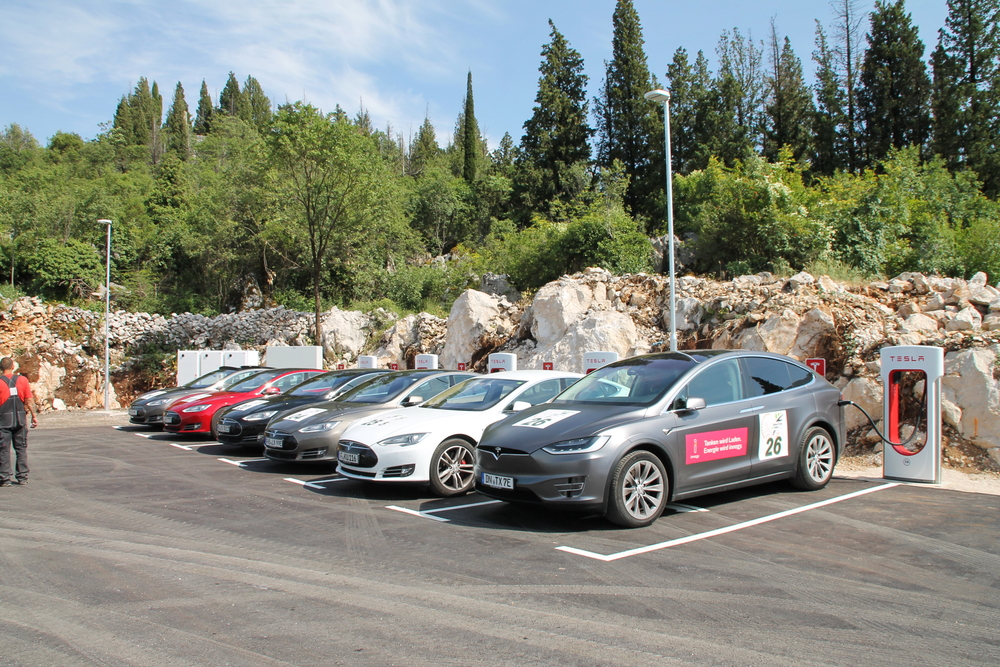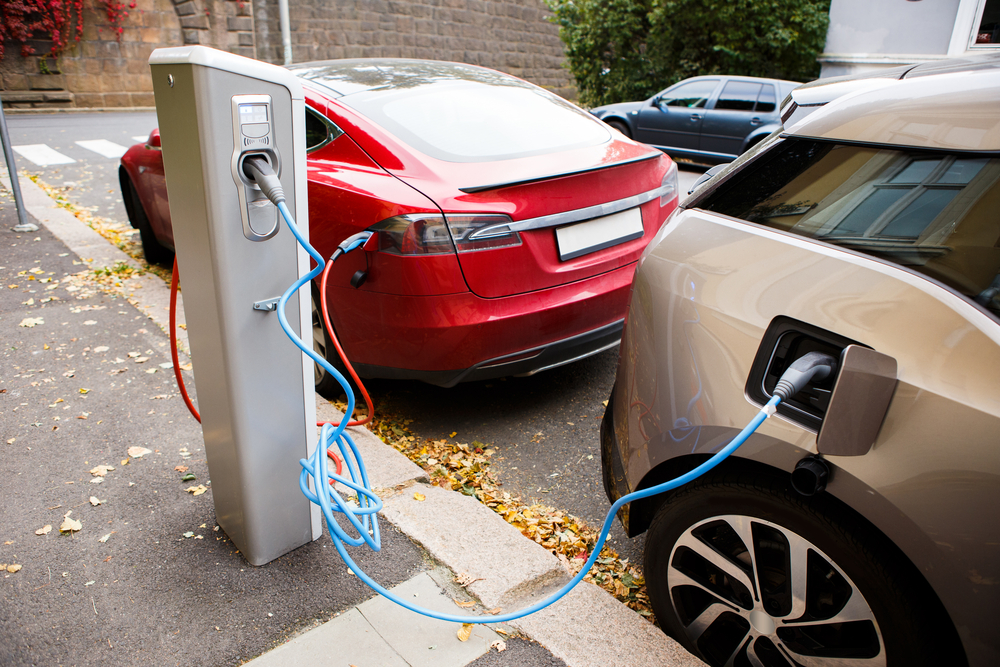Transition to electric-powered vehicles has become a real practice throughout the world, including Russia. It is important both to manufacture electric cars, buses, and trucks, and to create infrastructure for them. That is, to install charging stations along the roads. Then, the issue of their protection against lightning emerges. It is because lightning discharges may lead to the damage of equipment of the electrical station and of the vehicle being charged, as well as to the injuries (or even death) to the people standing nearby. When does a charging station require the lightning protection? How can we implement it? We are going to discuss these questions in this article.
Why is the lightning dangerous for charging stations?
The following situations are possible:
- Direct lightning strike into a charging station causing its partial destruction as well as potential injuries to the people and damage to the electric vehicles being charged, which are located nearby.
- External high potential and electromagnetic effects from lightning, which may lead to the malfunction of electronics at the charging station and at the vehicle being charged.
- Direct lightning strike to the electric vehicle being charged may lead to the damage of its electronics.
First, we will consider situations of direct lightning strikes in terms of various locations of charging stations.
External lightning protection for the charging station located inside the building
In Russia, electrical vehicles are primarily considered as a means of transport used across the city. Moreover, charging stations are often used as an additional way to attract customers. Also, the installed charging station improves the company's image by demonstrating the progressive mindset and environmental care. That is why the stations for charging electric vehicles are often located inside office buildings, malls, and other public buildings. If a charging station is located inside the building, wherein the entire set of lightning protection measures has been implemented, additional measures to protect it against direct lightning strikes are not necessary.
So, the charging station located near the building does not require a lightning rod?
The most common option for the cities is to locate a charging station near the building protected by a lightning protection system. To do this, we should perform calculations according to item 3.3.3 of Instructions for Lightning Protection of Buildings, Structures, and Industrial Utilities to understand if such electrical charging station is covered by the system. If it is, ou can install the station without any additional external lightning protection, preferably through providing a connection between the grounding circuit of the charging station and the grounding circuit of the building.
What happens if a charging station is located near the building but not covered by its lightning protection zone? In this case, the risk of the lightning strike is reduced due to an adjacent building but the designer should think of the protection of the station against direct lightning strikes.
As part of a conventional filling station
Since 2016, newly built filling stations in Russia should contain the equipment for charging electric vehicles (although, this regulation is not always fulfilled until now). Requirements to the protection of the filling station are much stricter than the requirements for the charging stations. Therefore, you should use the existing regulations for the lightning protection of the filling station. In particular, you should provide reliable protection against the direct lightning strike.
Protection of a standalone charging station against direct lightning strikes
An excellent property of the charging station compared to the conventional filling station is its possibility to operate without service personnel — usually, there are no rooms provided for the personnel, at all. Such structure has Flammability Class IIIa (metal frame, metal fencing; steel not protected from fire is used). You should distinguish charging stations with this structure in a city and in a rural area. According to RD 34.21.122-87, item 1.1, such structures located in the city do not require any lightning protection. But in rural areas, the same standards require lightning protection according to the norms applicable to the Category III facility.
However, note that RD 34.21.122-87 was developed in the Soviet time, when urban and rural areas were clearly differentiated. In the mid-2000s, a reform of the local governance was performed resulting in the formation of an “urban district” that includes a city and adjacent settlements and does not have a municipal division. Formally, its entire territory can be classified as urban, but, concerning the lightning protection, its certain part has properties typical of the rural area. In 2012, new territories were included in the Moscow territory forming the so-called “New Moscow”. In terms of urbanization degree, they are inferior to many adjacent districts of the Moscow Region; however, formally, they are still a city. Failure to provide the lightning protection for the charging station located “in the middle of nowhere” with no adjacent buildings only based on that it is formally an urban territory is somewhat dangerous.
The most common option for the lightning protection of a standalone, unserviceable charging station that has been validated in the world practice is to use a nearby illumination mast as a lighting rod (and it should be present in any case because it is very difficult to charge a vehicle in darkness without the lights). The grounding circuit of the mast is connected to the charging equipment.

With the electric transport development, we can expect that charging stations for the electric vehicle charging will have the format currently typical of filling stations, i.e. with a shop or a cafe. In this case, the lightning protection system for such stations should be designed according to the standards for the building with public spaces, and the charging equipment should be located in the protection zone.
External high potential and electromagnetic effects
The lightning strike close to the electric cable may cause induced pulse overvoltage in the cable. Moreover, the external lightning pulse from the grounding arrangement is also dangerous. The external potential may be direct, i.e. along the metal connection between the station's grounding system and the external lightning protection, or indirect, i.e. as a result of the lightning current flowing in the ground from the grounding arrangement of the lightning protection system. Electronics of charging stations is primarily damaged by overvoltage. It identifies the customer's smart card, performs billing, provides identification of the type of connected electric vehicle, etc. Along the electrical cable, a hazardous pulse may get into the vehicle in the course of charging, which will likely lead to the damage of at least an electronic unit responsible for charging the vehicle batteries.
To reduce the risk of the electronics damage both at the charging station and at the vehicle, surge protection devices (SPDs) are installed in the power line of the charging equipment. Charging stations have built-in SPDs, but most often their manufacturers install only Class III built-in devices. Therefore, it is strongly recommended to supply charging stations with additional surge protection devices (SPDs) of Classes I and II or combined type, especially if they are located outside the building. To learn how to properly choose SPDs, click.
current trend is that some companies produce SPDs intended specifically for the electric vehicle charging stations.
Additional protection against induced overvoltage is provided by shielding cables that power the station (e.g. installing them in a metal tray, if the cable is above the ground). To improve electromagnetic immunity, it is preferred to use a metal-free fiber optical cable to communicate with such station.

Can a lightning damage the vehicle?
If a lighting strikes the car body directly, the body shows the properties of the Faraday's cage. However, electronic damage is possible. The reason is that this "automotive Faraday's cage" is large.
The solution is rather simple: you should provide a reliable lightning protection of the location where the vehicle stops in the course of charging. This aspect should be considered in the design. In storm, you should drive a vehicle (of any type) slower.
Conclusions
Charging stations for electric vehicles are a relatively new type of infrastructure facilities. During the calculation of their lightning protection, we have to use old regulatory documents by adapting them to the current situation. Therefore, when deciding on whether the lightning protection is required for the charging station as well as when designing such protection, a proper solution will be to receive a consultation or a free calculation from experienced specialists at the Zandz.com Technical Center.
Related Articles:



